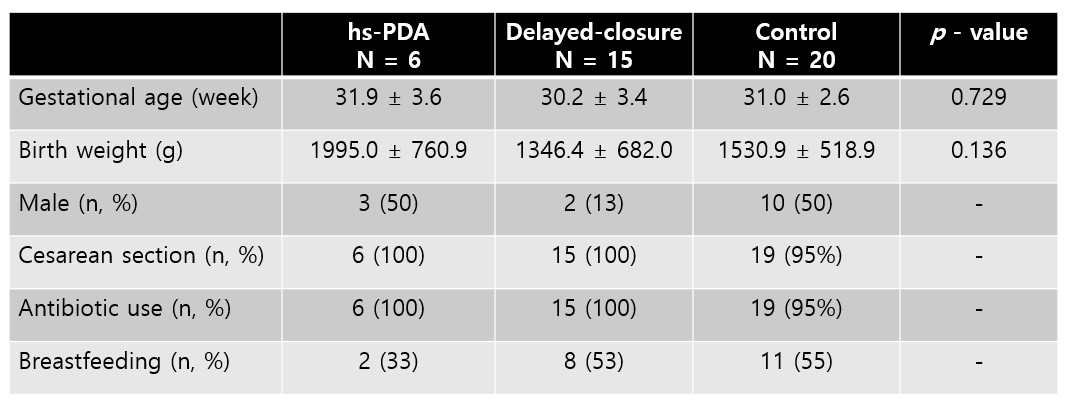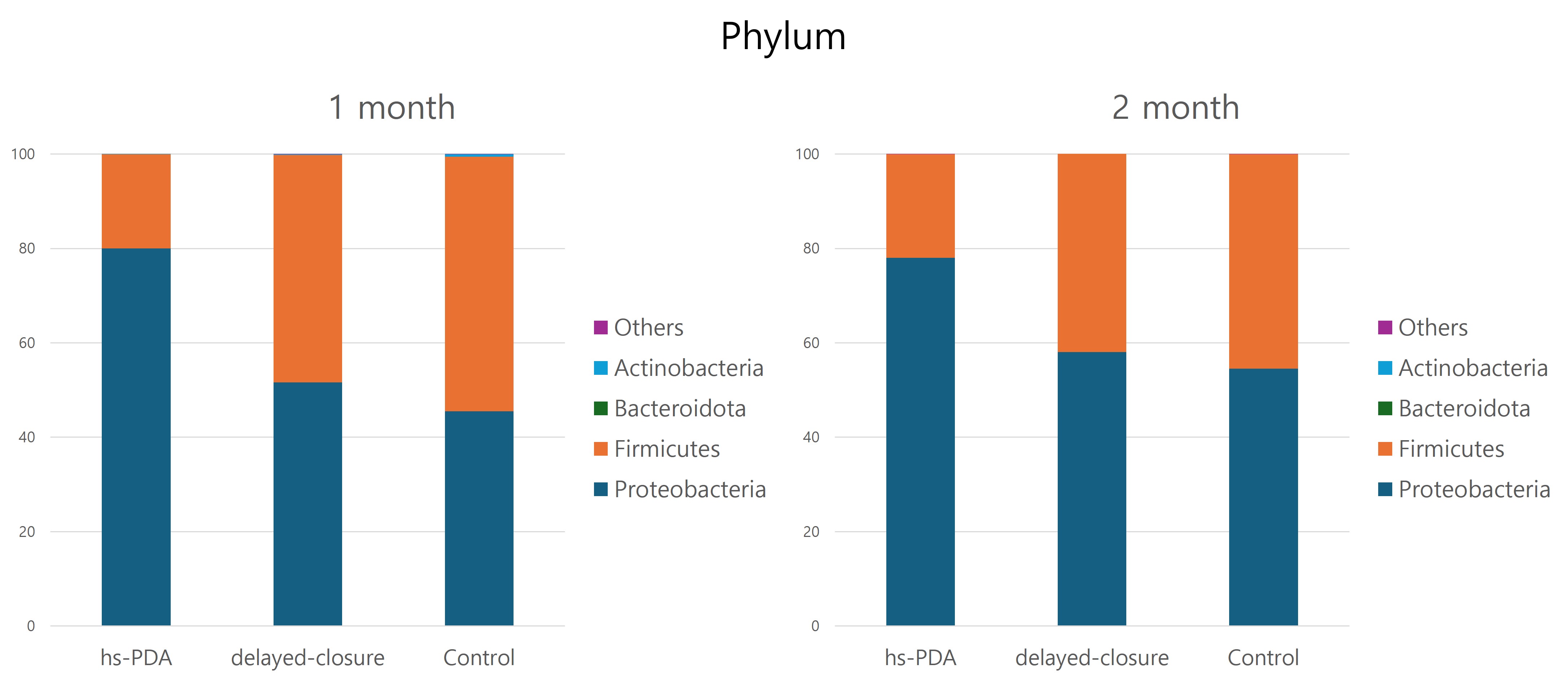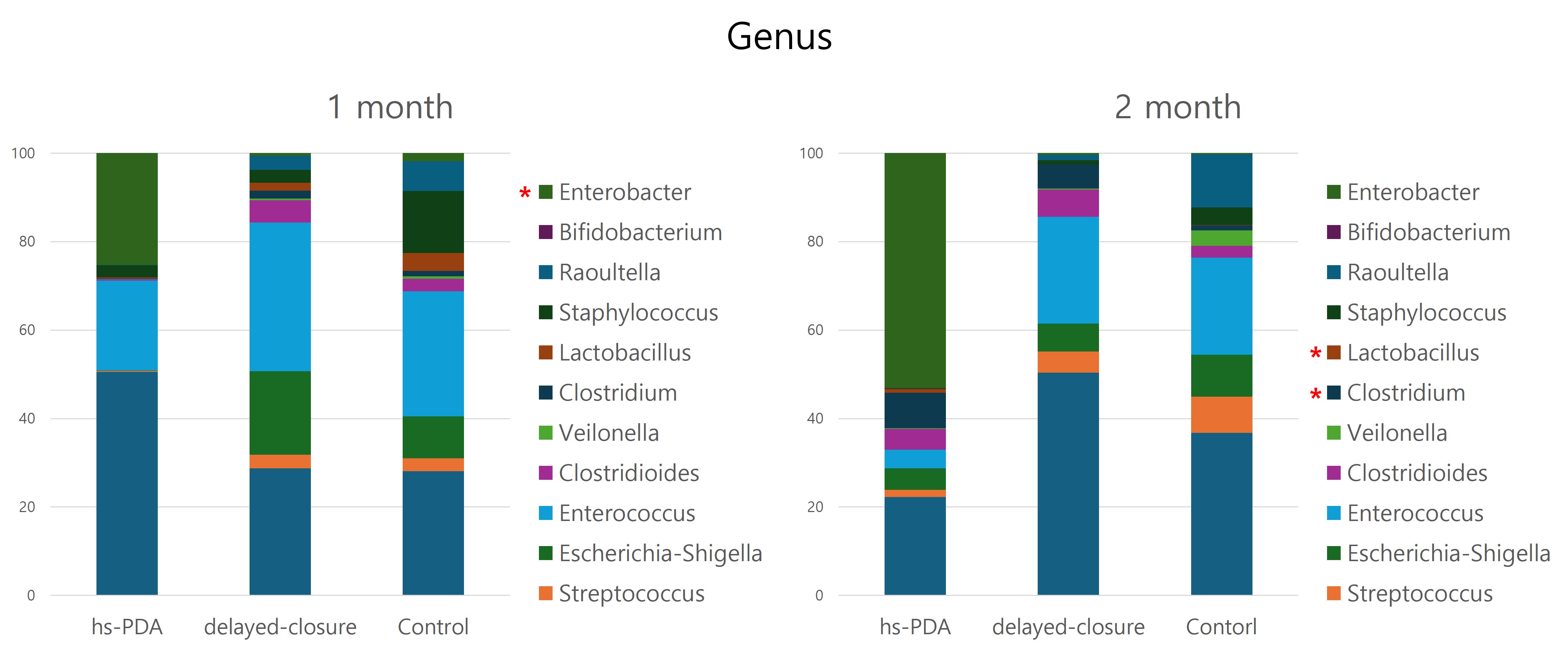Neonatal GI Physiology & NEC 4
Session: Neonatal GI Physiology & NEC 4
711 - Association Between Gut Microbiome and PDA Status in Preterm Infants
Monday, April 28, 2025
7:00am - 9:15am HST
Publication Number: 711.3945
Teahyen Cha, Gangnam Severance Hospital, Seoul, Seoul-t'ukpyolsi, Republic of Korea; Min-jin Kwak, university of floridia, gainesville, FL, United States; Jae Yoon Na, Hanyang University College of Medicine, Seongdong-gu, Seoul-t'ukpyolsi, Republic of Korea; G. Mustafa, Hanyang University, Seoul, Seoul-t'ukpyolsi, Republic of Korea; Rahul Sadashiv Tanpure, hanyang university, Seoul, Seoul-t'ukpyolsi, Republic of Korea; Byong-Hun Jeon, Hanyang University, Seoul, Seoul-t'ukpyolsi, Republic of Korea; Hyun-Kyung Park, Hanyang University College of Medicine, Seoul, Korea, Seoul, Seoul-t'ukpyolsi, Republic of Korea

Teahyen Cha, MD-PhD (he/him/his)
Clinical Assistant Professor
Gangnam Severance Hospital
Seoul, Seoul-t'ukpyolsi, Republic of Korea
Presenting Author(s)
Background: Patent Ductus Arteriosus (PDA) is prevalent in preterm infants, and hemodynamically significant PDA (hs-PDA) may influence gut microbiota, a factor in necrotizing enterocolitis (NEC). While microbiota imbalances are linked to cardiovascular and gastrointestinal conditions, limited research exists on hs-PDA's impact on the gut microbiome in preterm infants. Clarifying this relationship could aid in identifying early NEC biomarkers.
Objective: This study examines gut microbiota composition in preterm infants with different PDA statuses (early closure, hs-PDA, delayed closure) to identify microbial profiles potentially associated with hs-PDA symptoms and NEC risk.
Design/Methods: From 2022 to 2023, preterm infants at Hanyang University Hospital were categorized by PDA status: a control group with spontaneous closure, an hs-PDA group requiring treatment, and a delayed-closure group. Groups were matched for gestational age, sex, birth weight, delivery mode, and antibiotic exposure. Fecal samples collected at 1 and 2 months were analyzed via 16S rRNA sequencing with Nanopore technology, assessing relative abundance, alpha diversity, and beta diversity.
Results: A total of 72 fecal samples from 41 preterm infants (hs-PDA n = 6, delayed-closure n = 15, control n = 20) were collected. Proteobacteria was dominant in the hs-PDA group, while Proteobacteria and Firmicutes were comparable in the other groups, with patterns consistent across both time points. At the genus level, Enterobacter was significantly more abundant in the hs-PDA group (p = 0.034), with the difference more marked at 2 months. Alpha diversity was slightly lower in the hs-PDA group at both time points, though not statistically significant, and beta diversity showed no group differences.
Conclusion(s): These findings suggest that hs-PDA is linked to specific gut microbiome changes, notably increased Enterobacter, a genus associated with NEC risk. Persistent Enterobacter abundance supports early microbiome monitoring for potential NEC interventions. Limitations, including small sample size and limited NEC tracking, highlight the need for larger studies with extended follow-up to confirm these associations.
Demographic and Clinical Characteristics
 Comparison of gestational age, birth weight, sex distribution, delivery mode, antibiotic use, and breastfeeding rates among preterm infants with hs-PDA, delayed closure, and spontaneous closure (control) of PDA. Values are presented as means ± standard deviation or as numbers and percentages. P-values were calculated for gestational age and birth weight comparisons across groups.
Comparison of gestational age, birth weight, sex distribution, delivery mode, antibiotic use, and breastfeeding rates among preterm infants with hs-PDA, delayed closure, and spontaneous closure (control) of PDA. Values are presented as means ± standard deviation or as numbers and percentages. P-values were calculated for gestational age and birth weight comparisons across groups.Composition of Gut Microbiota at the Phylum Level in Preterm Infants at 1 and 2 Months
 Relative abundance of major bacterial phyla (Proteobacteria, Firmicutes, Actinobacteria, Bacteroidota, and Others) in preterm infants with hs-PDA, delayed-closure, and control groups at 1-month and 2-month time points. Proteobacteria was dominant in the hs-PDA group at both time points, while the proportions of Proteobacteria and Firmicutes were more balanced in the delayed-closure and control groups.
Relative abundance of major bacterial phyla (Proteobacteria, Firmicutes, Actinobacteria, Bacteroidota, and Others) in preterm infants with hs-PDA, delayed-closure, and control groups at 1-month and 2-month time points. Proteobacteria was dominant in the hs-PDA group at both time points, while the proportions of Proteobacteria and Firmicutes were more balanced in the delayed-closure and control groups.Composition of Gut Microbiota at the Genus Level in Preterm Infants at 1 and 2 Months
 Relative abundance of key bacterial genera in preterm infants with hs-PDA, delayed-closure, and control groups at 1-month and 2-month time points. Enterobacter was more abundant in the hs-PDA group compared to other groups, with this trend being more pronounced at 2 months. Asterisks (*) denote genera with significant differences between groups.
Relative abundance of key bacterial genera in preterm infants with hs-PDA, delayed-closure, and control groups at 1-month and 2-month time points. Enterobacter was more abundant in the hs-PDA group compared to other groups, with this trend being more pronounced at 2 months. Asterisks (*) denote genera with significant differences between groups.
